Author: Mr A
Saturday
Dr Google told us it was going to be a 2hr 33 min trip of 94km, as most of the road she knew was unmade. Too long we thought…be there in 90 mins. Well if you attempt this road from Gregory Downs across to Adels Grove, DO NOT FOLLOW DR GOOGLE! We blithely took the left turn she indicated, and bumped our way down 20km of corrugations…to a locked gate. This was the road to the zinc mine, and became private before coming out by Adels Grove. Back we went.
We arrived 1 minute after the good Doctor’s initial prediction, after having to stop to de-air when the bad corrugations kicked in. Adels Grove is a little oasis sitting in the middle of an enormous dry plain of spinifex.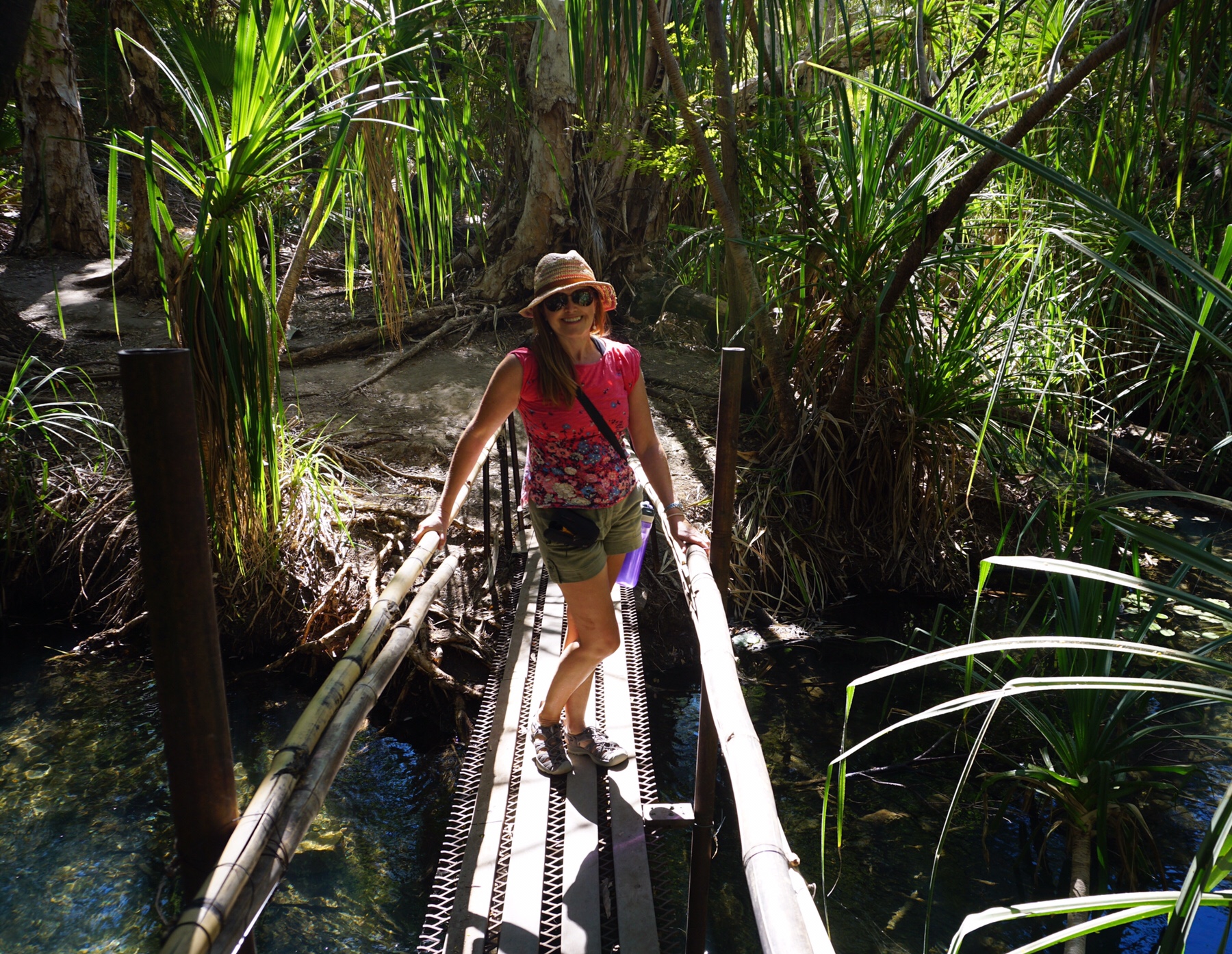
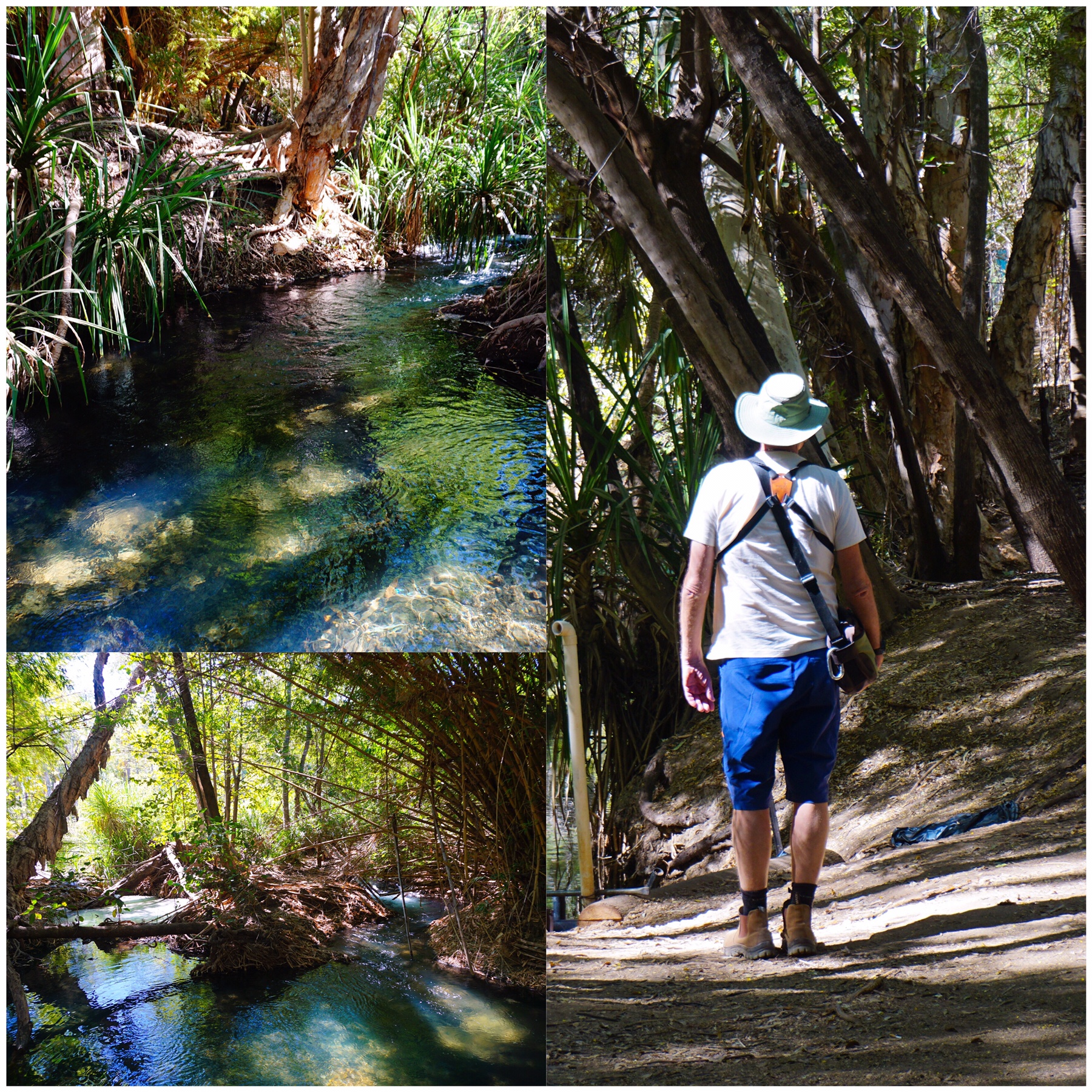 After the area was mined for zinc, silver and lead, the property was purchased by a French botanist who worked for the government. He spent his life planting an incredible botanical garden, irrigating his prize plants from the river, and recording the flora and fauna around the property in meticulous notes, only to have the whole lot burn down from a fire that escaped from a local mine. He no doubt cried “Merde” and promptly laid down in a deep depression and passed away.
After the area was mined for zinc, silver and lead, the property was purchased by a French botanist who worked for the government. He spent his life planting an incredible botanical garden, irrigating his prize plants from the river, and recording the flora and fauna around the property in meticulous notes, only to have the whole lot burn down from a fire that escaped from a local mine. He no doubt cried “Merde” and promptly laid down in a deep depression and passed away.
We had a bit of a wander round, its a pretty big camp area, no power but with predictable blue skies every day solar is the go. River water is pumped up to some shared taps, but we came with full tanks (300 litres) so won’t be needing to boil that, and there is plenty of shade. Just 100 metres away from where we are set up, the vegetation changes completely from the parched, dustiness of the camping area, to the lush bamboo that grows along the clear, cool water of the creek. It made a lovely change to see this oasis after the dust and dryness of the previous week.
Sunday
We headed to explore Boodjamulla National Park, just 10km down the road. This is what everyone comes to Adels Grove for, and if you are travelling with your fur buddy like us, then you have to stay outside the national park.
Our first suprise was the jam packed car park, we hadn’t expected quite this many people in this out of the way spot. As more people head out for their “wilderness experience” we must expect this I guess. We had been looking forward to getting our packrafts out here, as there is a gorge you can paddle. It was pretty busy out on the water for the first half an hour, then most of the hire boats had tuned around and we started to really appreciate the beauty of the place.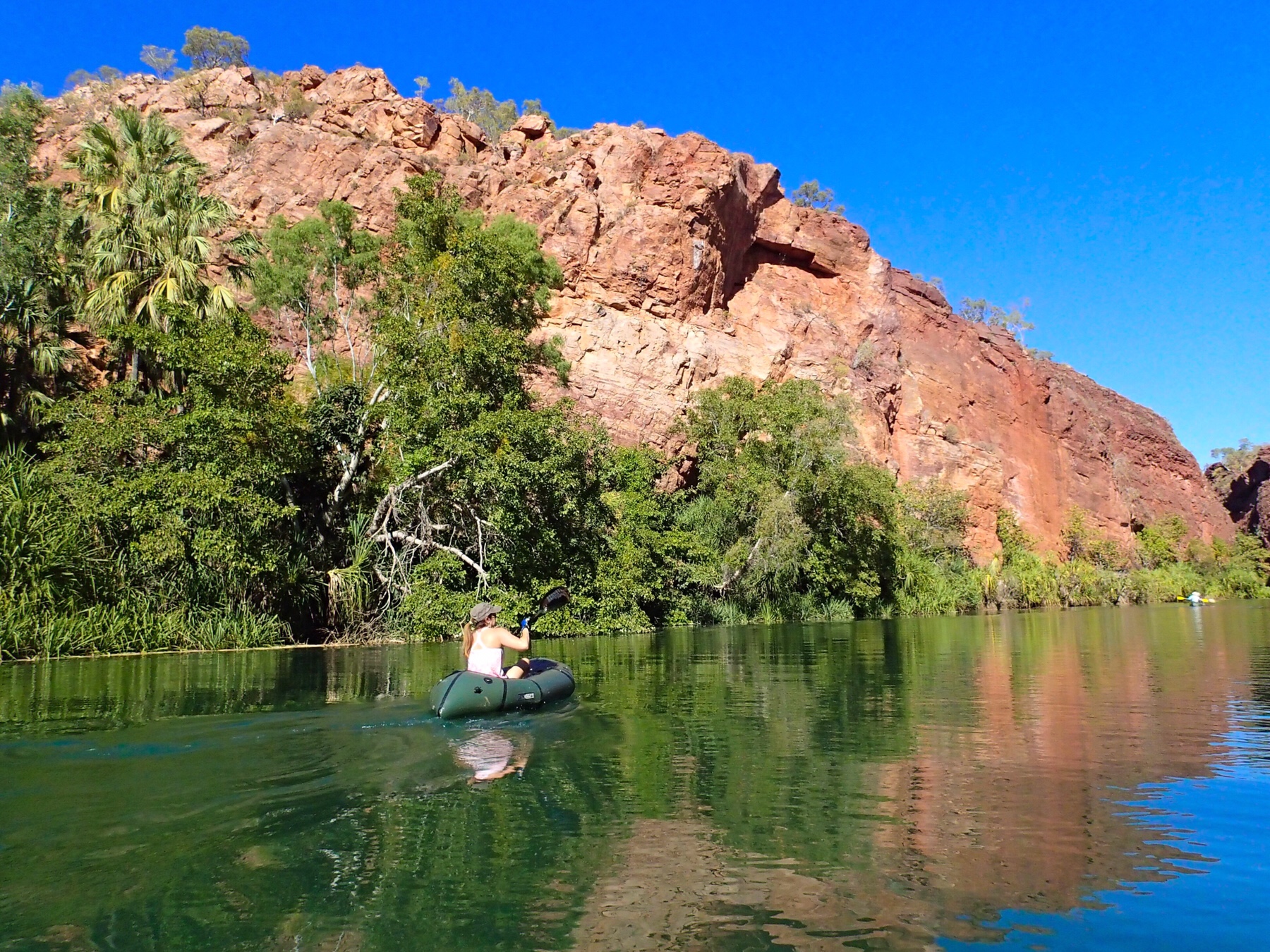
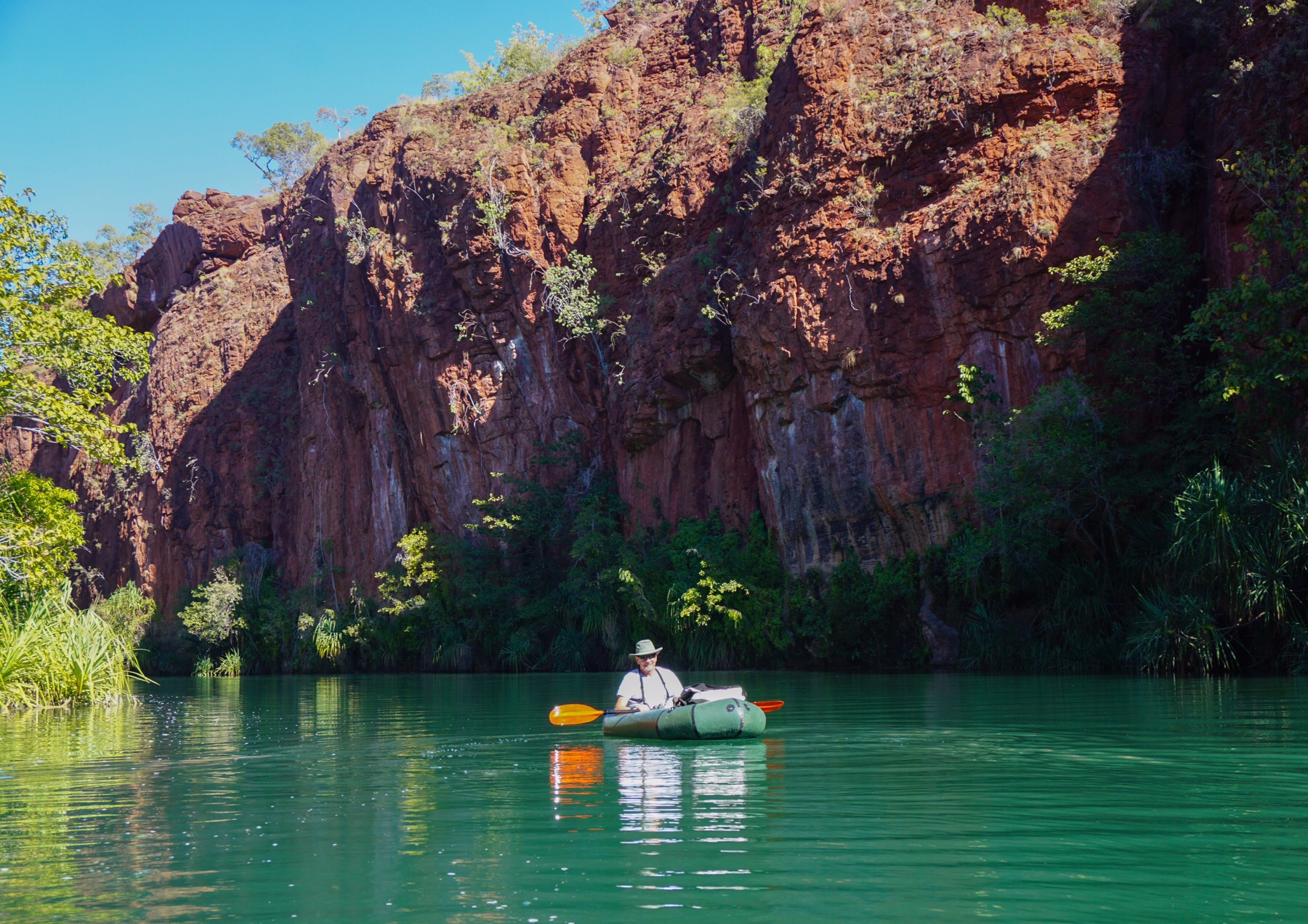 I would definitely recommend not listening to the advice they give you to “come out here early”. By lunchtime we were on our own, and what a fantastic place this is. One of the most beautiful locations we have ever paddled in with absolutely prolific birdlife echoing across the gorge. Apparently there are freshwater crocodiles in here – we didn’t spot any but did hear at least one suspect splash as we travelled silently along.
I would definitely recommend not listening to the advice they give you to “come out here early”. By lunchtime we were on our own, and what a fantastic place this is. One of the most beautiful locations we have ever paddled in with absolutely prolific birdlife echoing across the gorge. Apparently there are freshwater crocodiles in here – we didn’t spot any but did hear at least one suspect splash as we travelled silently along.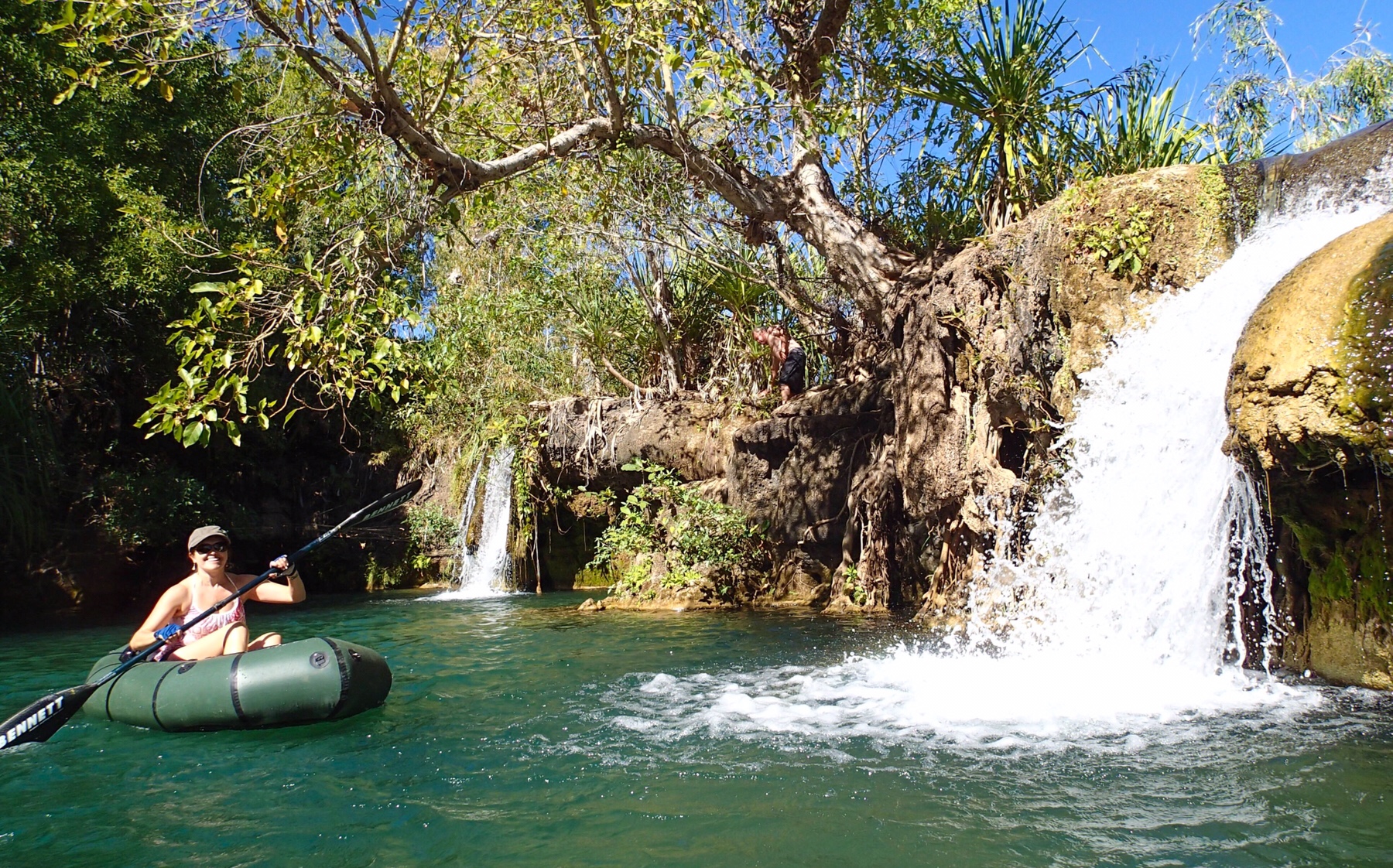 There’s one short portage, no problem for us in lightweight boats, then the second part of the paddle was even more spectacular. The archer fish were out in shoals, spitting water up at me (did I look like a fly?). Fly catchers darted around above the water doing a much better job of catching their prey.
There’s one short portage, no problem for us in lightweight boats, then the second part of the paddle was even more spectacular. The archer fish were out in shoals, spitting water up at me (did I look like a fly?). Fly catchers darted around above the water doing a much better job of catching their prey.
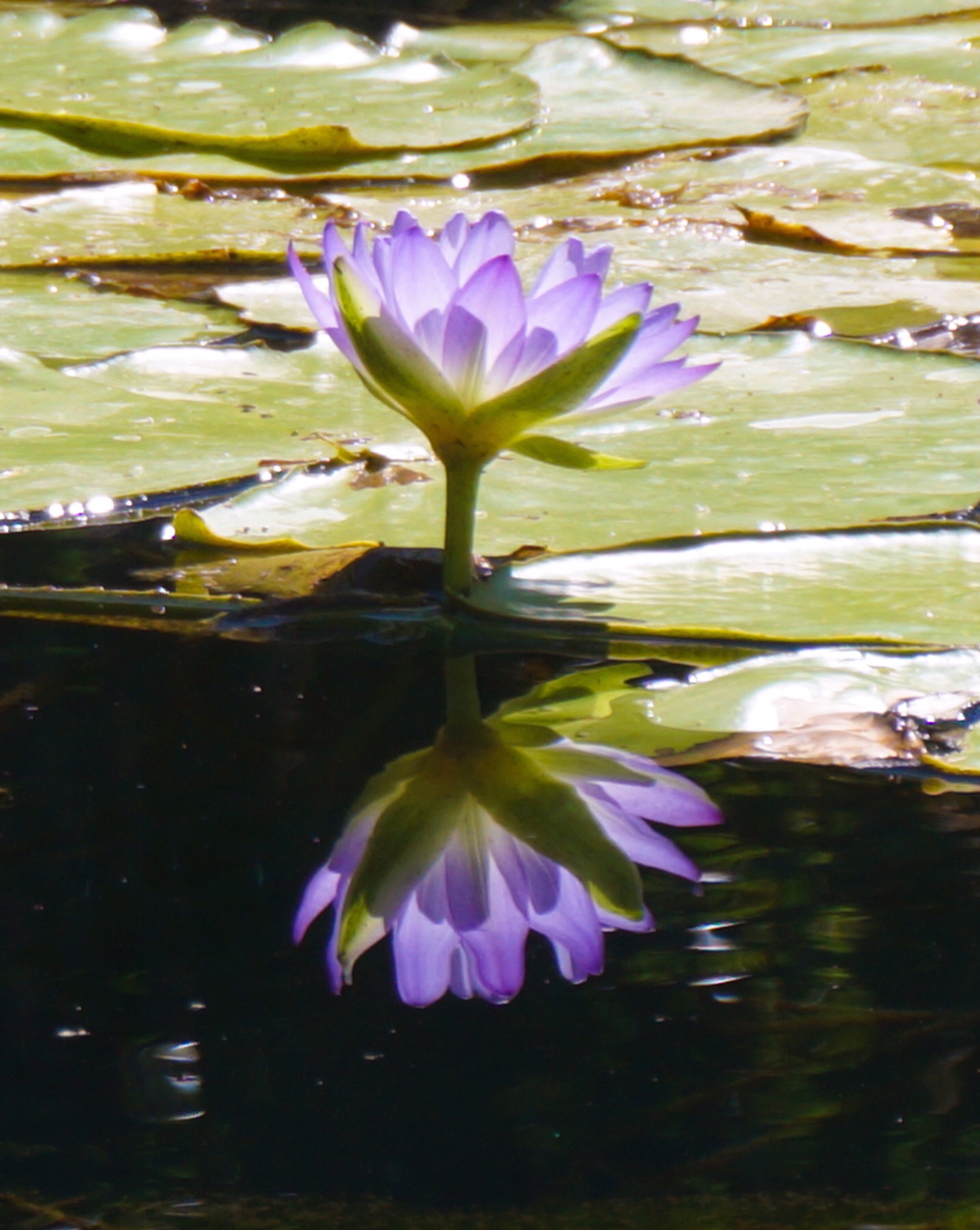
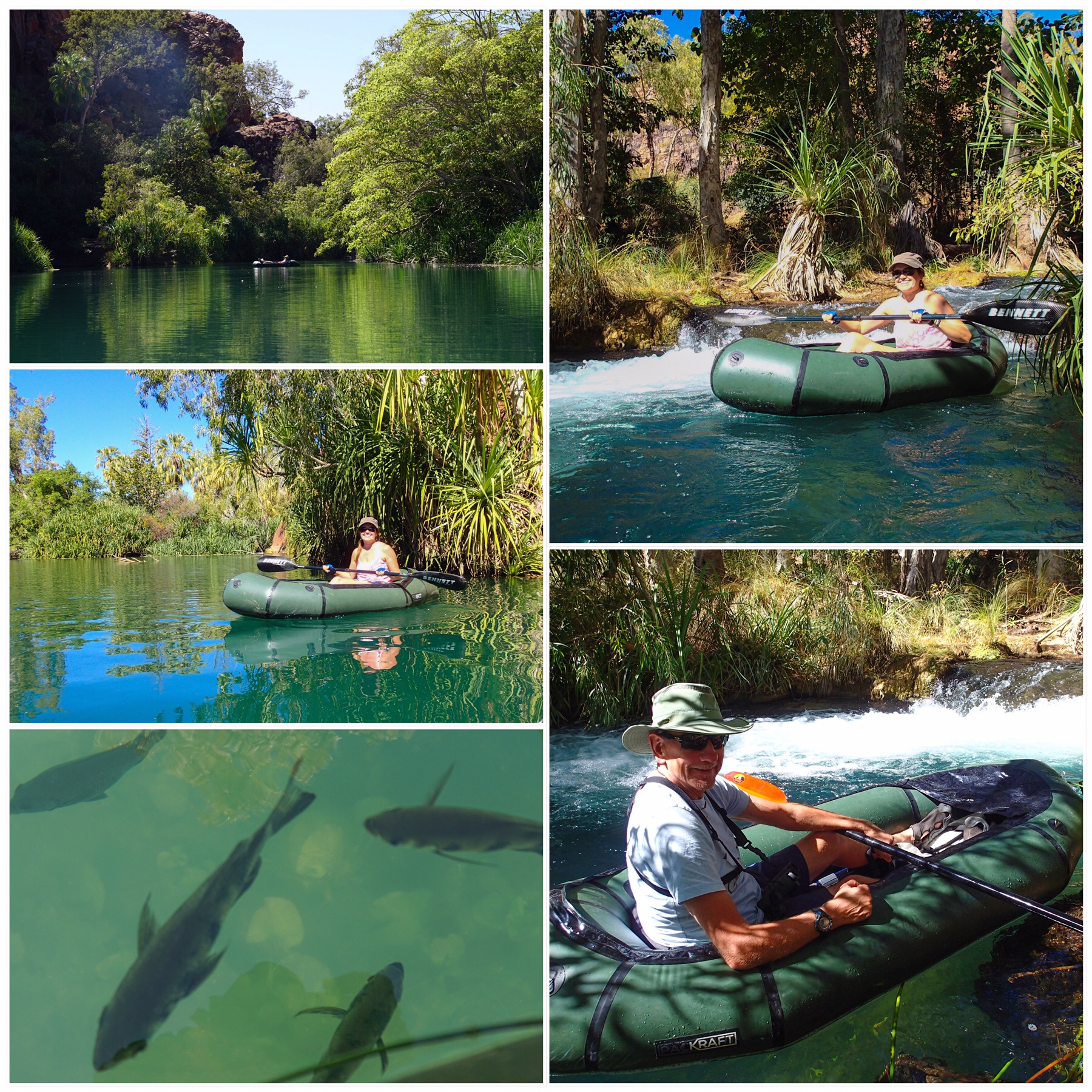 On the way back to the car we stopped at the information boards and read about the significant aboriginal history of the area. The gorge and surrounding area has been lived in for 35,000 years, according to the latest radiocarbon dating of artefacts found here. Not for the 200 years as you would think just reading the information back at Adels Grove. Just think on that for a moment. A continuous, sustainable, culture in this area stretching back 32,000 years before the Pyramids were being built. Nowhere else in the world has anything like that.
On the way back to the car we stopped at the information boards and read about the significant aboriginal history of the area. The gorge and surrounding area has been lived in for 35,000 years, according to the latest radiocarbon dating of artefacts found here. Not for the 200 years as you would think just reading the information back at Adels Grove. Just think on that for a moment. A continuous, sustainable, culture in this area stretching back 32,000 years before the Pyramids were being built. Nowhere else in the world has anything like that.
I’m just reading a fascinating book about the history of archeology in Australia (Deep Time Dreaming by Billy Griffiths), which helps explain why we still really know so little about our country’s “deep history”, as he calls it. But more discoveries are being made here (like the oldest known shaped tool in the world at 65,000 years old), that are forcing a rethink of the first migrations of our species across the globe. Finally Australia’s history is being put into a proper context.
